Exhaust Leak | Repair Cost and Symptoms of Exhaust Leak
The aim of the car exhaust system is to transfer gases from the engine combustion chamber to the outside of your vehicle via an exhaust pipe leading to the left or right end of the rear bumper. An Exhaust leak can allow these harmful pollutants into the cabin, causing your car to fail emissions tests. Discover these five indicators of an exhaust leak to guarantee concerns are resolved quickly and your car continues to function effectively.
What is an Exhaust Leak?
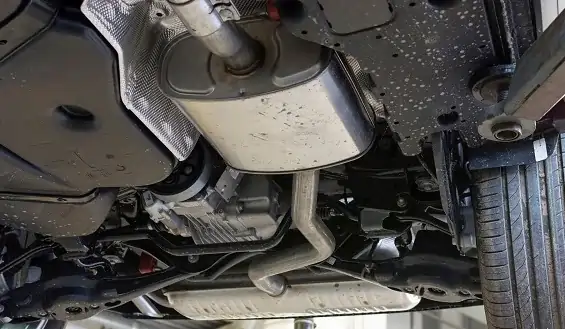
An exhaust leak is simply an opening, hole, or damage in your exhaust system that allows unwanted hazardous gases to enter the vehicle cabin rather than exiting out the back exhaust pipe.
Phosphorus, nitrogen oxides, carbon monoxide, and metals such as unburned gasoline and lead are all found in engine exhaust.
An exhaust leak can be fatal if the car’s exhaust system or ventilation system does not sufficiently remove pollutants but instead accumulates them much faster within the car’s cabin.
Poor fuel economy, poor engine performance, noise, and a broken catalytic converter are the most prevalent indications of exhaust leaks.
Read also: How to Do a Resonator Delete? | Tips for Resonator Delete
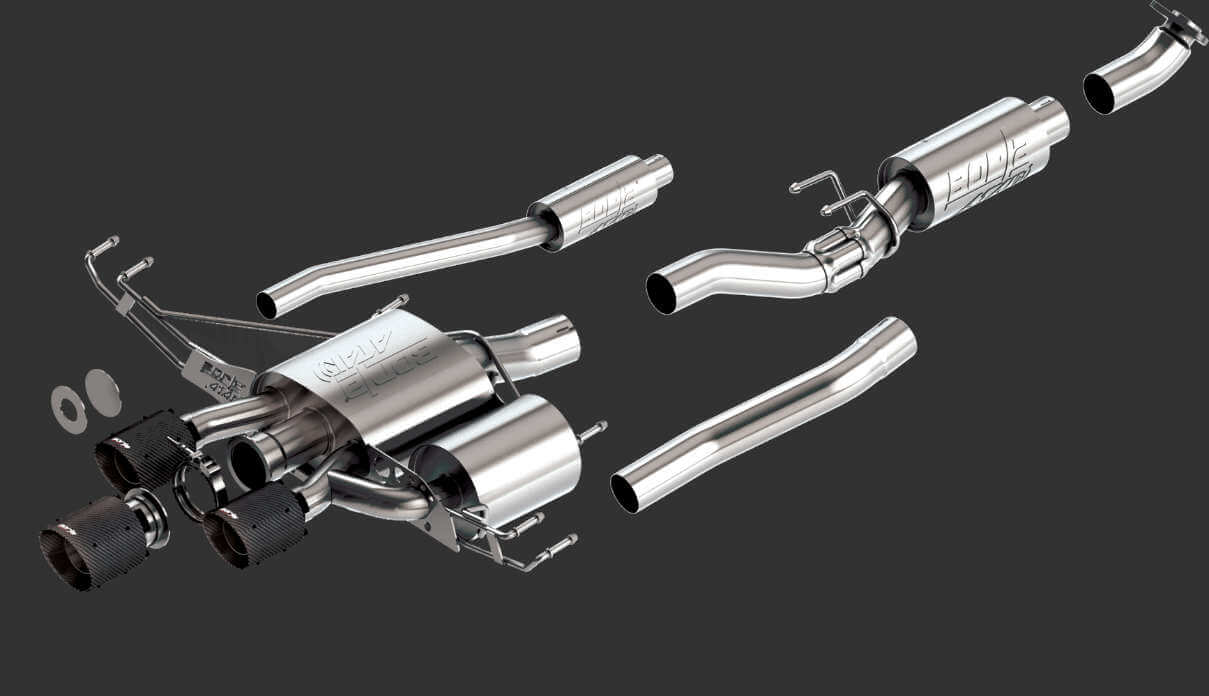
Your vehicle’s exhaust system is a networked arrangement of sensors, connectors, pipes, and several other components designed to manage and eliminate exhaust gases produced by the engine’s combustion process.
The exhaust system’s primary job is to efficiently send all of your car’s undesired harmful gases out the back. Additionally, by utilizing a catalytic converter, this system decreases engine noise and aids in the management of exhaust emissions.
Components of Exhaust System

The components of Exhaust System are given below:
Exhaust valve and piston: These engine components assist in pushing exhaust gases out of the combustor and into the exhaust manifold.
Muffler: It is used to reduce the rejection of exhaust and combustion noise.
Tailpipe: This is where the exhaust from the car exits.
Exhaust manifold: The path used by a piston to reach a catalytic converter.
Exhaust pipe: Transports the cleaner exhaust gases from the muffler.
Catalytic converter: It reduces pollution by turning some pollutants into carbon dioxide and water. Nonetheless, the released vapors are classified as toxic.
Can You Drive With an Exhaust Leak?

While it is conceivable, you should not drive your vehicle while it has an exhaust leak. While increased noise, vibrations, and poor gas mileage may be minor annoyances, carbon monoxide is no laughing matter.
You may believe that you are safe from hazardous exhaust fumes inside the car’s cabin, but the inside is not airtight, so carbon monoxide can slowly start seeping in but has a difficult time getting out.
Exhaust gases can cause headaches, weariness, and dizziness, which can lead to an accident. Prolonged carbon monoxide exposure can potentially result in death.
If you notice any of the above symptoms (especially if you smell exhaust fumes in the cabin), you should take your car (with a window rolled down) to an auto repair or muffler shop immediately soon.
Causes and Preventive Measure of Exhaust Leak
![]()
The most common causes of exhaust leaks include driving on bumpy roads and exhaust system components with rust corrosion. Driving on bad roads can subject your exhaust system to shaking and bumps, which can weaken holes and structural components, and rust and corrosion damage in exhaust system parts are ideal areas for exhaust leaks to emerge.
Furthermore, if one of the hangers holding your exhaust system in place fails or the rubber isolator piece becomes overly worn, other sections may weaken or become damaged as they bounce around and absorb more vibration and impact during vehicle operation.
Having your service provider inspect the exhaust system on a regular basis is your best defense against exhaust leaks and the difficulties they cause. Having your exhaust system inspected will allow you to identify and solve any problems before they become a major problem.
Exhaust Leak Repair Cost

The average exhaust leak repair cost is between $100 and $800, depending on the location of the exhaust leak.
The following are the average repair costs for exhaust leaks. These rates include both parts and labor. This is very dependent on the model of your vehicle.
| Part Replacement | Replacement Cost |
| Cat back Exhaust Replacement | $150 to $600 |
| Exhaust Joint Replacement | $30 to $200 |
| Exhaust Pipe Welding | $20 to $100 |
| Catalytic Converter Replacement | $400 to $1500 |
| Exhaust braided flex pipe | $100 to $300 |
| Whole Exhaust Pipe Replacement | $300 to $1200 |
| Front Exhaust pipe replacement | $150 to $600 |
If you’re lucky, the exhaust leak can be repaired with a welder. If you know how to do it, you can solve your exhaust leak problem for free.
Exhaust systems are frequently replaceable in portions rather than replacing the entire system. This saves a significant amount of money.
Catalytic converters and DPFs are frequently on the higher end of the price spectrum, so if you can solve your leak without replacing these, that’s always a plus.
Exhaust Leaks Hazardous and Damaging
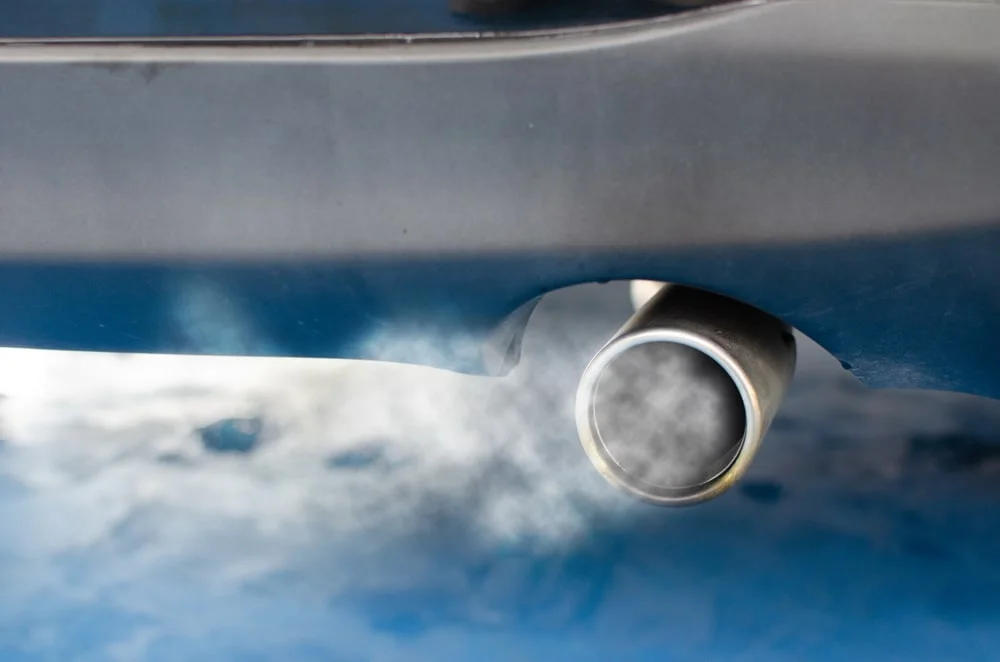
Exhaust leaks are annoying, inconvenient, and humiliating. You don’t want to announce your arrival on every street you drive down, especially if you’re simply on your way to work.
Of course, noise isn’t the sole reason to fix a leak. This common problem could endanger you and your vehicle in the future.
If you have a pattern of ignoring problems, you may need to reconsider your approach. The following are some of the reasons why an exhaust leak could lead to far more serious difficulties down the road.
-
Engine Damage
In the worst-case scenario, an exhaust leak in any sensitive places could result in costly internal engine damage. If your exhaust system moves gases away from the engine, it serves a purpose other than simply transporting harmful substances.
Furthermore, the exhaust stream removes heat created in the combustion chambers. The system’s capacity to remove heat from the engine is jeopardized if an exhaust leak develops near the exhaust manifold.
This increased heat can damage the valves that allow the gasses to escape. This type of internal engine damage frequently costs well over $1,000, far outweighing the expense of repairing the leak in the first place.
-
Harmful Emissions
When you smell exhaust vapors inside your car, it means that harmful exhaust gases are circulating throughout the cabin. The typical passenger automobile is not airtight and relies on its exhaust system to safely remove gases from its back.
However, if the pollutants are coming from underneath the automobile, they frequently make their way into the passenger compartment. Carbon monoxide is one of the most dangerous combustion byproducts, and it is a silent killer.
You may be ignorant of the issue if a harmful amount of toxic gas leaks into your vehicle. While these leaks can be costly for a variety of reasons, cabin leakage is the most dangerous to the health of drivers and passengers.
-
Bad Oxygen Sensor
Excess gasoline in the exhaust stream may clog the sensor tips, reducing their capacity to deliver an accurate measurement.
The longer you ignore a leak, the more probable it is that your O2 sensors will need to be replaced as well. In addition to the service cost, a faulty O2 sensor affects your car’s gas mileage, depletes engine power, and may cause your car to idle unevenly.
Furthermore, you may generate a large number of system error codes, making it difficult to pinpoint the source of the problem.
-
Cat Converter Deficiency
A leaking exhaust system may result in more than just a failure to remove combustion waste from your engine. It also has the capacity to pull excess oxygen into the system. When this happens, the O2 sensor in your car identifies a lean condition and compensates by supplying additional gas to the combustion mixture.
Unburned gas will enter your exhaust stream since there isn’t enough air to burn it completely. While unburned gas may appear to be harmless, it is harmful to your vehicle’s catalytic converters.
Unburned gas would combust when it approached cat converters due to the extremely high temperatures at which they operate. Over time, this wears down the interior layer, blocking the gadget and preventing it from working properly.
How To Fix An Exhaust Leak?

If you discover an exhaust leak, it may be difficult to repair. To further comprehend the situation, you should surely seek the advice of an experienced technician. You might be willing to replace a component of the system.
This is achieved by disconnecting the connections and replacing the broken component. If the entire system does not need to be changed, this is merely an option. The negative is that it is nearly always expensive and difficult to perform due to rusted studs, nuts, and other components. Bring your vehicle to a reputed auto repair facility where a new section of the pipes can be welded in for you.
They’ll make certain that your entire system is leak-free. Furthermore, you always have the option of replacing the entire system. A technician would frequently recommend this because there is no guarantee that welding will last for a lengthy period of time. It is entirely up to you whether to replace the entire system or just the leak, and this is determined by the severity of the leak.
Symptoms of an Exhaust Leak
The efficient working of your vehicle’s exhaust system is very important for the efficient working of your vehicle. As your exhaust system goes bad or leaks, it generates one or more symptoms. Your car may exhibit one of the symptoms listed below as soon as there is an exhaust leak.
There are some symptoms of Exhaust Leak are:
Unusual Noise When Accelerating

When the driver presses the accelerator pedal to propel the automobile, it usually makes a slight roaring sound. This noise is made when the engine spins its parts to produce the necessary driving force. Any unusual noises, on the other hand, could be an indication of exhaust leaks.
If you are hearing weird noises that you are not used to hearing, this could be an indication that exhaust gases are seeping from the system someplace. You should be able to tell the difference between noises originating from your engine and those coming from your exhaust at this point.
Exterior Carbon Buildup
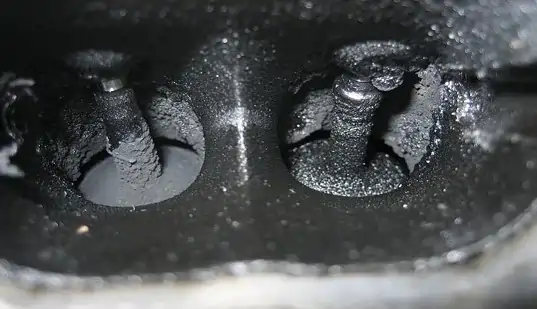
While looking for the source and location of the leak, keep an eye out for black areas. During an exhaust leak, carbon particles may build around the leak spot.
Visible Defects

With time, the nuts, studs, or screws that secure the exhaust manifold to the cylinder head may corrode and fail, resulting in a leak. The bolts on your exhaust manifold may be damaged or broken if it is deformed.
Furthermore, charred parts and black streaks near the leak suggest that the exhaust manifold is leaking. Cracks in the exhaust manifold may be noticed during the visual inspection.
Failed Emission Test
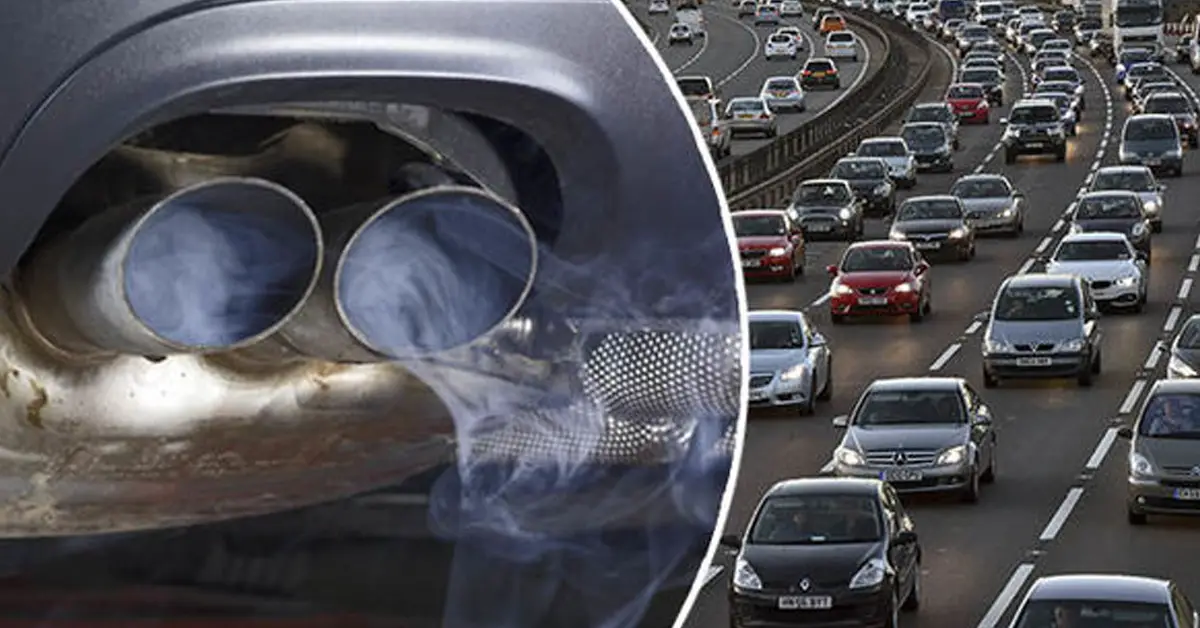
To pass the car inspection process in most countries, you must pass the emission test once a year. Because of the leak in your exhaust system, your vehicle will fail this emission test.
A leak before the oxygen sensor will result in incorrect air-fuel mixture readings, but a leak after the oxygen sensor will result in a lean mixture. As a result, if the size of the leak is somewhat larger, your vehicle may fail the test.
Tapping

The clicking sound you hear from your car could be caused by an exhaust manifold leak. When you start a cold engine, this sound usually becomes louder. When the engine heats up and the exhaust manifold expands, this sound may fade.
Engine Noise
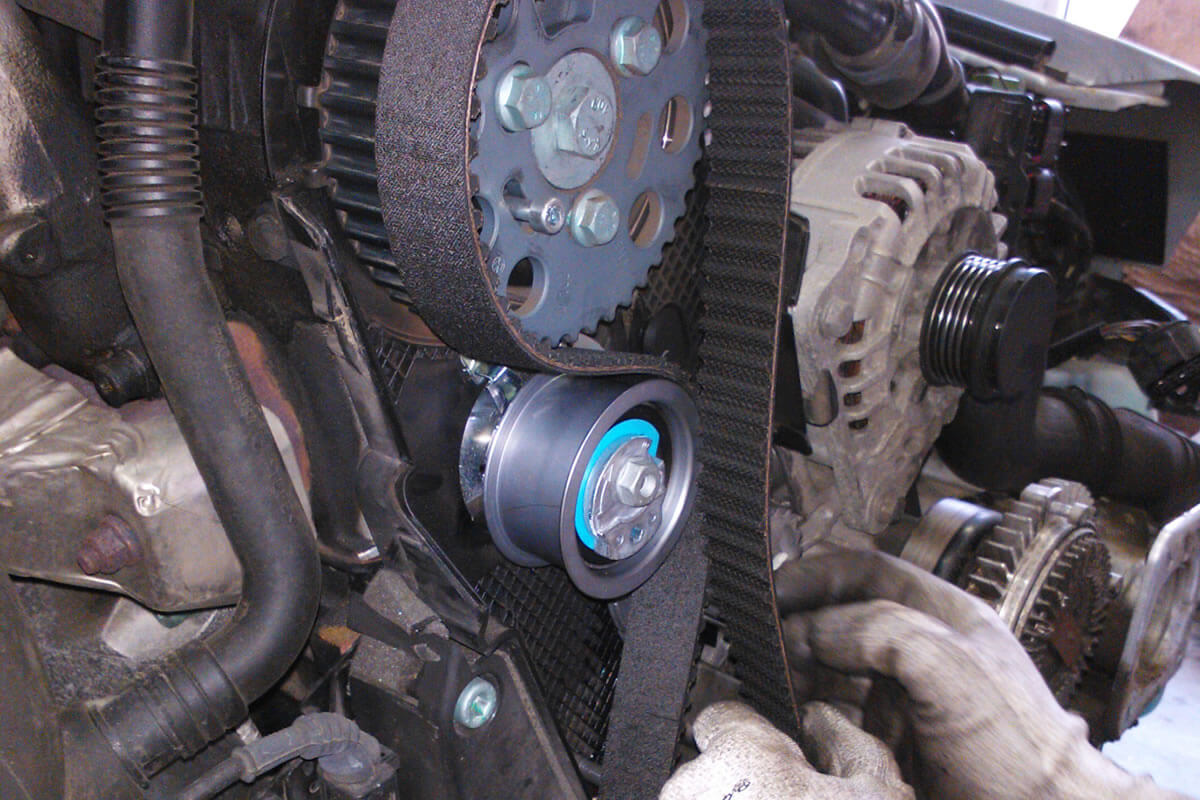
One of the most obvious indicators of an exhaust leak is increased engine noise. Your car has about two mufflers that serve to reduce engine noise.
If your exhaust system leaks immediately before the mufflers, the mufflers will not be able to decrease or silence the engine noise. This is because the sound waves bypass the muffler and exit the vehicle directly. As a result, you will notice increased engine noise, the intensity of which varies on the severity of the damage.
Vibrating Gas Pedal

After pressing the gas pedal in your car, you may feel sensations in your feet. These vibrations could be caused by exhaust leaks. The intensity of these vibrations grows in proportion to the size of the gas leak.
You may notice vibrations in your steering wheel and floorboards if you have an exhaust leak. The vibration will eventually reach a level that is audible throughout the cabin.
High Fuel Consumption

Your car’s fuel-air ratio is displayed via the O2 sensors. This sensor determines the correct air-to-fuel balance by measuring the fuel-air mixture and determining whether it is burning rich or lean.
The O2 sensor is located in the exhaust system, and a leak prior to this sensor can cause your vehicle to run lean.
Due to an exhaust system leak, your vehicle’s powertrain control module (PCM) will be unable to read the amount of oxygen entering and departing the oxygen sensor valves. This may eventually result in the use of more fuel than usual.
Check Engine light illumination

The O2 sensors in your vehicle’s exhaust system monitor the outgoing fuel mixture from the engine as well as the catalytic converter’s performance.
Because your exhaust system leaks immediately before the O2 sensor, your O2 sensor will be unable to measure precise values and will send incorrect data to the PCM. When your PCM identifies a problem in the exhaust system, it immediately generates a fault code and flashes the check engine light.
Conclusion
Exhaust symptoms are frequently difficult to detect. If only one symptom appears, it should be enough of a red flag for you to take your automobile to a mechanic for repair.
Don’t wait for all of these symptoms to occur simultaneously. Otherwise, you risk harming your engine or exhaust system as well as endangering the health of the vehicle’s occupants. Exhaust leaks should not be overlooked.
FAQs
Q: Can you drive a car with an exhaust leak?
Driving a car with an exhaust leak may be hazardous owing to carbon monoxide emissions. A leak like this could impair gas mileage by forcing the engine to work harder, causing internal engine damage.
Q: What do exhaust leaks sound like?
If you have a faulty exhaust manifold gasket, you may hear a spraying or tapping sound. The sound is most noticeable after a cold engine start or when the car accelerates.
Q: What happens if there is an exhaust leak?
A leak might have an adverse effect on the air/fuel mixture ratio. An improper ratio may cause the engine to function inefficiently, reducing overall engine performance.
Q: Is there an error code for an exhaust leak?
Perhaps, depending on the location of the leak. If a leak is large enough to impair oxygen levels, a code will be generated.